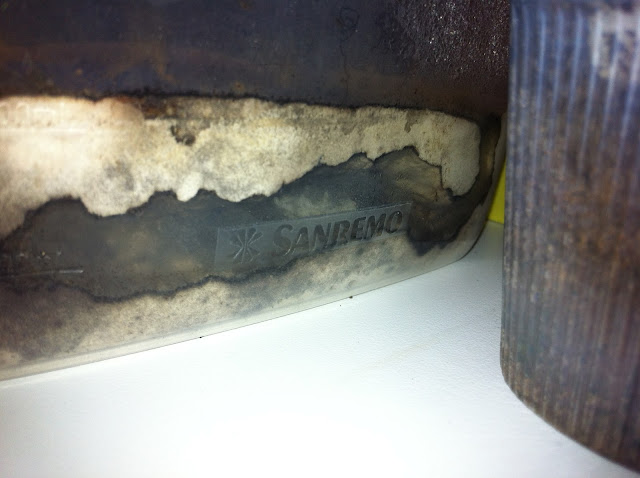Hello all,
Olá a todos,
I will start writing posts in English and Brazilian Portuguese from now on. I will write each paragraph in English and repeat it in Portuguese so Brazilians who do not have such a good grasp of the English language can follow my posts more easily.
Vou começar a escrever em inglês e português de agora em diante. Vou escrever um parágrafo em inglês e depois repetir em português, pros brasileiros que não tem um domínio da língua inglesa poderem seguir o blog mais facilmente.
I have had a colony of Crematogaster cf. rudis in my office desk for about a year now, and I thought you might be interested in the setup of this nest as it is a bit different from the usual set up of my other nests. Here is a picture of the nest as it sits on my desk today:
Faz mais ou menos um ano que eu tenho uma colônia de Crematogaster cf. rudis na minha mesa de trabalho, e pensei que seria interessante mostrar a configuração dessa colônia, já que é um tanto diferente das minhas outras colônias. Aqui tem uma foto dela como está na minha mesa hoje:
In this setup, the ants are actually free to leave the plaster nest (the box with the red lid) at will and roam about, but not the queen. On the lid of the nest I made a small hole which is big enough for the workers to pass through, but not the queen herself.
Nesta configuração, as operárias estão livres pra sair do formigário de gesso (a caixa com a tampa vermelha) e passear o quanto quiserem, mas não a rainha. Na tampa do formigário eu fiz um buraco que é grande o suficiente pras operárias passarem mas pequeno demais pra rainha sair.
The idea of having an open nest started off as a wild experiment with my Camponotus cruentatus (one of the biggest european Camponotus species) colony at home. What is different from this Crematogaster nest to my other open Camponotus nest is that the Crematogaster have a foraging area which has many plants, and is more pleasing overall. Here are two more pictures of the setup:
A idéia de ter um formigário aberto surgiu como um experimento com uma colônia de Camponotus cruentatus (uma das maiores espécies de Camponotus da Europa) que eu tenho em casa. A diferença do formigário desta colônia de Crematogaster é que ele têm uma área maior com várias plantas em volta, o que o torna muito mais bonito de observar. Aqui vão duas fotos:
The colony consists of one queen and about 50 workers. The ants have made their first satellite nest about two months ago, and although I expected them to do it soon enough, I was quite pleased when I saw it. The picture is not that good, but you can see the entrance if you look closely enough on the rightmost hand side of the farthest yoghurt pot. Here is a closer picture, although not that good either:
A colônia consiste de uma rainha e umas 50 operárias, mais ou menos. Elas fizeram um ninho "satélite" há uns dois meses, e embora sabia que isso poderia acontecer e a espécie faria cedo ou tarde, eu fiquei bastante contente quando notei que haviam feito. A foto não tem boa qualidade, mas se você olhar o pote branco de iogurte, dá pra ver a entrada do lado direito, no canto. Aqui vai uma foto do ninho mas, novamente, de não muito boa qualidade:
I hope I don't take another 6 months to post something else here.
Espero voltar a postar novamente em menos de 6 meses. =c]


















































